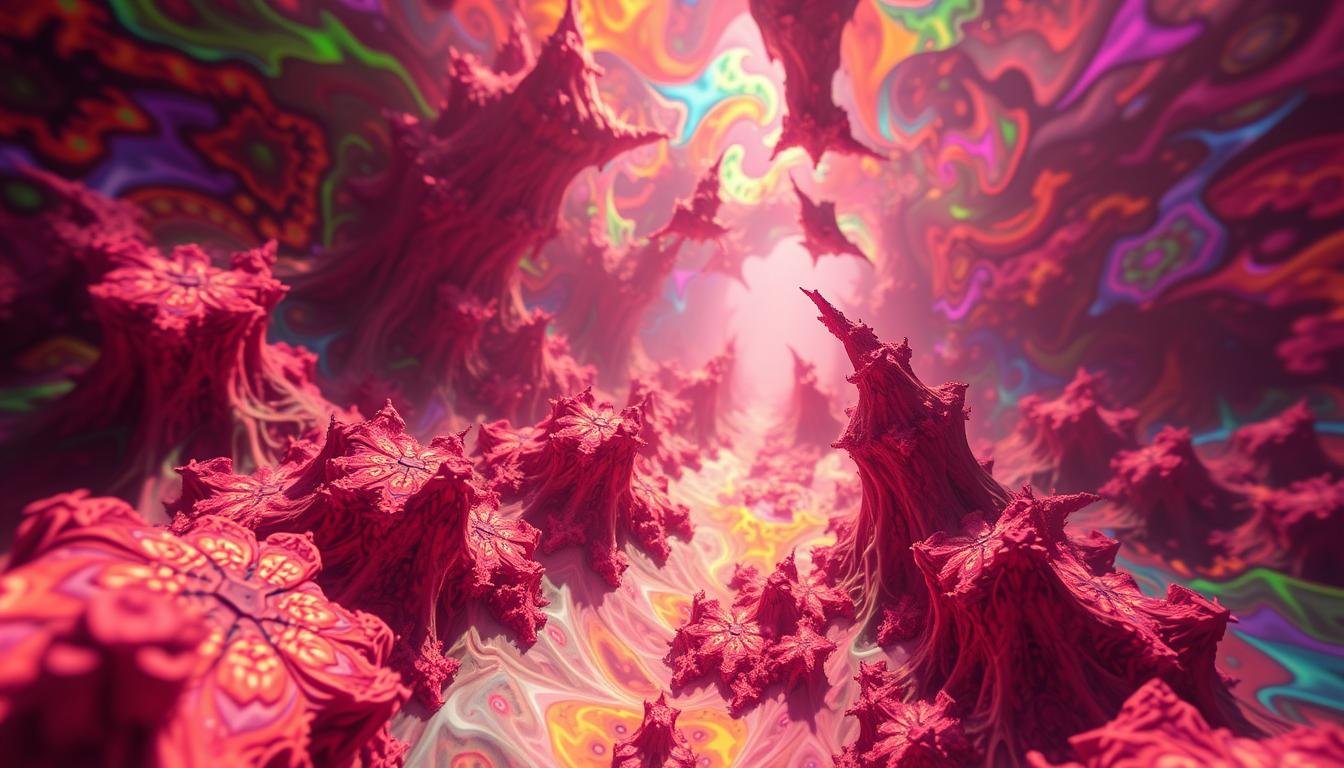LSD, a powerful psychedelic drug, has captivated the curiosity of many since its inception. Known colloquially as acid, it holds a unique place in both recreational use and the realms of therapy and mental health. This article delves into the fascinating history of LSD, tracing its origins and examining its multifaceted effects. As we uncover the significance of this hallucinogen in popular culture and clinical settings, we will also address its legal status in the United States. Join us on this journey to demystify LSD and explore its impact on society today.
The Origins of LSD
Understanding the origins of LSD provides insight into its profound impact on science and culture. Albert Hofmann, a Swiss chemist, played a pivotal role in its discovery. His exploration into the properties of ergot fungus led to the LSD synthesis in 1938. Initially, Hofmann sought to develop a medication to improve circulation but stumbled upon a compound that would change the course of psychoactive research forever.
Albert Hofmann’s Discoveries
In 1943, after unintentionally ingesting a small amount of LSD, Hofmann experienced a vivid journey filled with “extraordinary shapes and intense colors.” This remarkable encounter marked a turning point in the history of LSD. His revelations about the compound’s psychoactive effects sparked interest in its potential uses and dangers.
The First Acid Trip: Bicycle Day
On April 19, 1943, Hofmann decided to revisit his earlier experiment with LSD. During his commute home, he realized the full impact of the substance for the first time. This excursion became known as Bicycle Day, commemorating Hofmann’s historic ride while under the influence of LSD. This event symbolizes both the beginning of a new era in psychedelic exploration and the unfolding story of LSD’s role in the broader context of human consciousness.

Understanding LSD Effects
LSD is known for inducing diverse experiences, commonly referred to as acid trips. These trips can significantly alter a person’s perception of reality, emotions, and thoughts. The nature of an LSD trip can vary dramatically, influenced by several factors including dosage and individual mental state.
What is a Trip?
An acid trip typically lasts between six to twelve hours, filled with vivid hallucinations and profound thoughts. Users may experience a heightened sense of awareness, allowing for connections and insights that seem elusive during sober moments. This can lead to what many describe as a good trip, marked by feelings of joy and enlightenment.
Good Trips vs. Bad Trips
While a good trip can be awe-inspiring, bad trips can evoke confusion, fear, or anxiety. During a bad trip, a person may feel overwhelmed and out of control, leading to distressing thoughts and visuals. The unpredictability of these LSD effects means that even seasoned users can encounter a bad trip, highlighting the importance of mental preparation and surroundings.
The Phenomenon of Flashbacks
Many individuals report flashbacks, which are spontaneous recurrences of aspects of their acid trip long after the LSD has left their system. These flashbacks can be triggered by various stressors and may evoke either positive or negative feelings, depending on the nature of the original trip. Researchers continue to study flashbacks to understand their mechanisms and implications for users over time.
The Role of LSD in Therapy
Recent research into the therapeutic potential of LSD has gained substantial traction. As studies expand, clinical trials suggest promising results for various mental health conditions such as depression, PTSD, and anxiety disorders. These trials examine how LSD therapy may safely enhance treatment outcomes, offering new hope to patients who have not found relief with conventional medications.
Clinical Trials and Research
Clinical trials focusing on LSD therapy have begun to outline its effectiveness and safety. Researchers are exploring the profound effects that LSD may have on mental health treatment, shedding light on the compound’s ability to facilitate emotional breakthroughs. Findings indicate that patients undergoing therapy with LSD frequently report significant improvements in their mental well-being following traditional therapeutic practices.
Micro-Dosing: A New Approach
Micro-dosing presents an innovative twist on LSD therapy. By taking sub-perceptual doses, individuals have reported benefits without the intense experiences typically associated with higher doses. Many claim that micro-dosing helps alleviate symptoms of depression and anxiety, allowing for enhanced creativity and better mood regulation. While scientific research is still in its early stages, anecdotal evidence supports these claims, indicating a potential shift in how mental health treatment can be approached.
LSD in Popular Culture
LSD in culture took root during the vibrant 1960s, largely fueled by influential figures who shaped the era’s spirit. Ken Kesey and his Merry Pranksters became synonymous with this psychedelic movement, combining art and music in their legendary “Acid Tests.” These events demonstrated how LSD could serve as a means for exploration and connection, uniting participants in artistic expression and communal experiences.
Ken Kesey and the Merry Pranksters
Ken Kesey, a pivotal figure in the psychedelic scene, played a crucial role in popularizing LSD. His Merry Pranksters traveled across America in a brightly painted bus, creating a cultural phenomenon that captivated many. The Acid Tests hosted by the Merry Pranksters allowed people to experience LSD in a communal atmosphere, breaking down societal barriers and promoting a sense of freedom and experimentation.
Timothy Leary’s Influence
Timothy Leary emerged as another leading advocate for LSD, primarily during his time at Harvard University. Through captivating lectures and research, Leary introduced the concept of using LSD for expanding consciousness. His famous mantra, “Turn on, tune in, drop out,” inspired countless individuals to explore their own perceptions and paved the way for broader acceptance of psychedelics in the counterculture movement.
The Grateful Dead and Music
The Grateful Dead embraced LSD as an essential component of their music. Their concerts became legendary experiences where the vibrations of psychedelic sound intertwined seamlessly with the effects of LSD. Fans known as “Deadheads” often experienced transformative moments while enjoying the band’s improvisational style, further solidifying LSD’s role in the cultural fabric of the time.
The CIA and Project MK-Ultra
Project MK-Ultra stands as a controversial chapter in American history, an initiative by the CIA during the 1950s aimed at exploring LSD mind control. In the context of the Cold War, the intelligence agency sought to develop techniques for interrogation and manipulation using LSD as a tool. The project involved conducting CIA experiments on unsuspecting individuals, raising significant concerns regarding the ethics of experimentation.
Exploring Mind Control Through LSD
Using LSD for mind control, Project MK-Ultra’s focus extended beyond mere drug testing. The project involved various psychological approaches where subjects were subjected to altered states of consciousness. With the intent of creating a formula for effective control over the human psyche, the CIA’s investigation delved into the realms of manipulation and dominance, resulting in unforeseen consequences for participants.
The Aftermath of MK-Ultra
The aftermath of Project MK-Ultra revealed alarming truths about government-sanctioned experimentation. Public disclosure in the 1970s prompted intense scrutiny of the CIA’s methods, leading to widespread criticism and demands for accountability. The fallout from these revelations continues to spark debates about the ethics of experimentation, especially concerning the use of potent substances like LSD in human trials.
Legal Status of LSD in the United States
The legal status of LSD remains a complex issue shaped by historical context and evolving perceptions. Under the Controlled Substances Act of 1970, LSD was classified as a Schedule I drug, which implies that it has a high potential for abuse and no accepted medical use. This classification has led to significant legal issues surrounding both its consumption and research. As attitudes toward psychedelics shift, discussions have surfaced regarding the potential for therapeutic uses and the ethical implications of its prohibition.
The Controlled Substances Act of 1970
The enactment of the Controlled Substances Act was a pivotal moment for LSD legality in the United States. By categorizing it alongside other substances like heroin and cocaine, the government effectively limited research and public discourse about its benefits. This legal framework established stringent penalties for possession and distribution, making it increasingly difficult for scientists to explore its therapeutic potential.
Current Legal Challenges and Debates
Recent years have seen a shift in drug policy discussions, particularly regarding LSD. Legal challenges are arising, focusing on its decriminalization and exploring its use in clinical settings. Advocates argue that regulating LSD could lead to significant advancements in mental health treatment. These debates highlight an urgent need to reevaluate outdated legal frameworks poised against emerging scientific evidence supporting LSD’s efficacy.
LSD and Other Hallucinogens
LSD serves as a prominent figure among various hallucinogens, distinguished by both its synthetic nature and profound effects. In an LSD comparison, differences emerge between this created substance and natural hallucinogens like psilocybin and peyote. Exploring these distinctions offers a fascinating glimpse into their unique characteristics and cultural relevance.
Comparing LSD with Natural Hallucinogens
Natural hallucinogens, such as psilocybin found in mushrooms and mescaline derived from peyote cacti, evoke distinct experiences compared to LSD. While LSD is synthesized in a lab, the roots of psilocybin and peyote trace back to ancient rituals and religious ceremonies. Each hallucinogen has varying effects on perception and emotional state, contingent on dosage and individual metabolism. Many users report that psilocybin often leads to a more grounded, introspective experience, whereas LSD may prompt more intense visual and auditory alterations.
The Historical Context of Psilocybin and Peyote
Psilocybin and peyote hold significant places in the spiritual traditions of various indigenous cultures. These natural hallucinogens have been utilized for centuries in shamanistic practices, serving as tools for healing and communion with the divine. The historical context enriches the understanding of these substances, celebrating their vital roles in cultural identity. In contrast, LSD arose in the 20th century, primarily associated with counterculture movements. While the appeal of LSD surged in the 1960s, the ongoing popularity of natural hallucinogens signals a revival of interest in ancient practices.
The Science Behind LSD
Understanding the intricate relationship between LSD and the brain reveals fascinating insights into its neurological effects. LSD science has advanced significantly, showcasing how this powerful compound interacts with serotonin receptors in the brain. This interaction leads to increased connectivity across various brain regions, promoting unique cognitive experiences and alterations in perception.
The effects duration of LSD can stretch from 8 to 12 hours, making it one of the longer-lasting psychedelics. Neurological research continues to explore how LSD not only modifies typical brain function but also enhances creativity and shifts sensory processing. This remarkable capacity to change user experience underscores the complexity of brain interaction and the lasting ramifications of LSD consumption.
Conclusion
This article encapsulates an LSD overview that highlights not only its origins but also its effects, therapeutic potential, and cultural significance. From the groundbreaking discoveries of Albert Hofmann to the profound impact LSD has had on art and society, it is clear that this compound holds a multifaceted role in shaping human experience. As ongoing research continues to uncover the therapeutic possibilities of psychedelics, society’s evolving perceptions surrounding LSD may pave the way for a more nuanced understanding of its benefits.
The psychedelic future of LSD invites us to explore the healing avenues it offers, particularly in mental health treatments. With clinical trials evolving and discussions around its cultural significance gaining momentum, we stand at the precipice of a transformative era in mental wellness and self-exploration. By bridging historical stigma with contemporary insights, a deeper dialogue on the role of LSD and psychedelics could unfold, enriching our understanding and acceptance.
Ultimately, this journey through the complexities of LSD signals not just a return to its roots but an invitation to reimagine the potential of psychedelics in our lives. As we integrate this knowledge into both therapeutic settings and cultural dialogues, we open ourselves to the possibilities that lie ahead, making way for a broader discourse around healing, creativity, and consciousness. Please visit for more cocabuyonlineshop.

